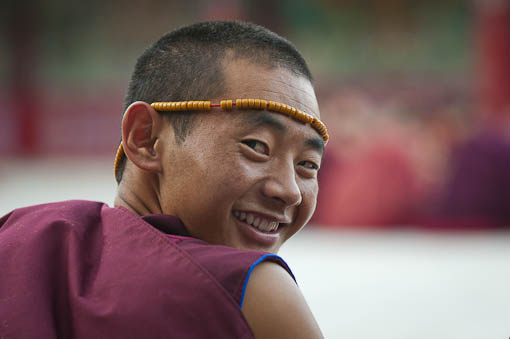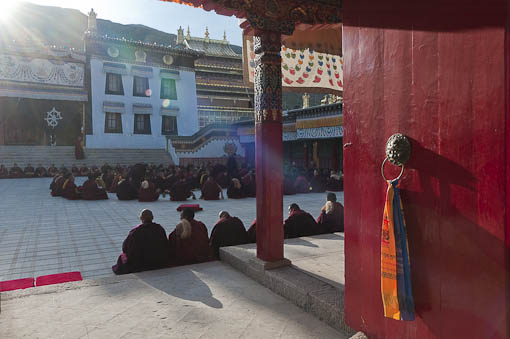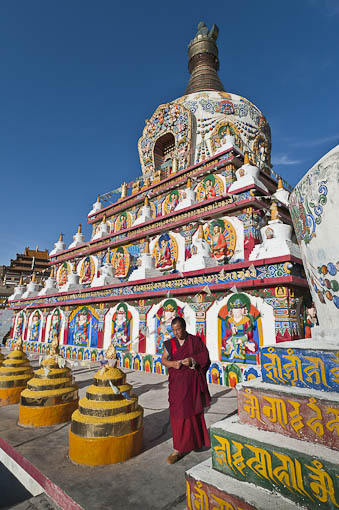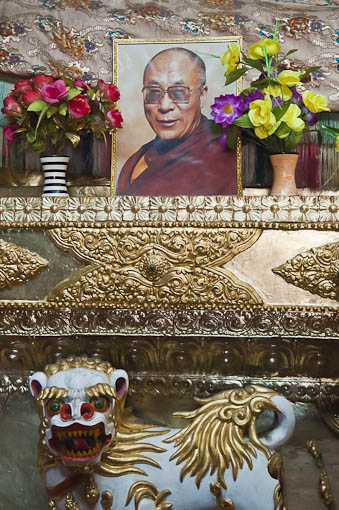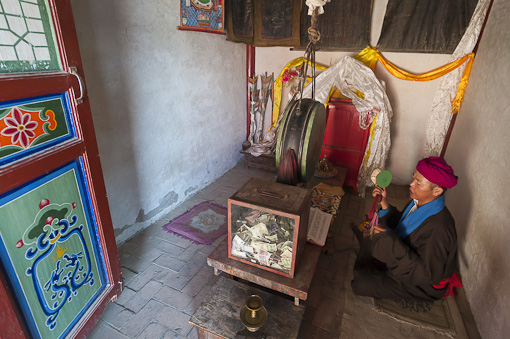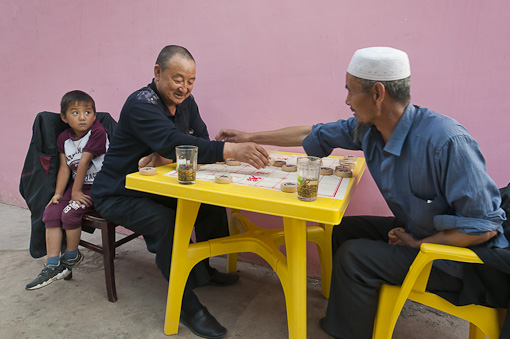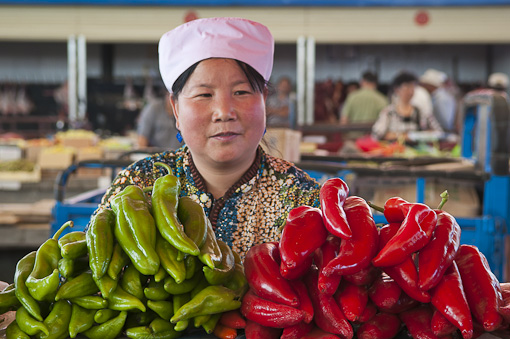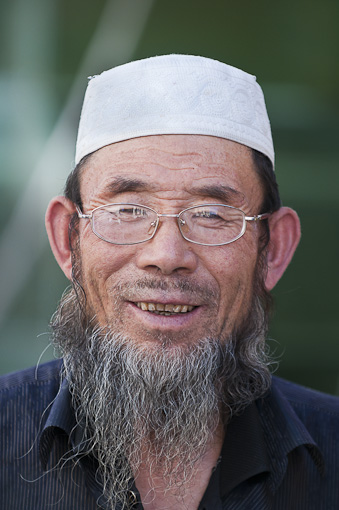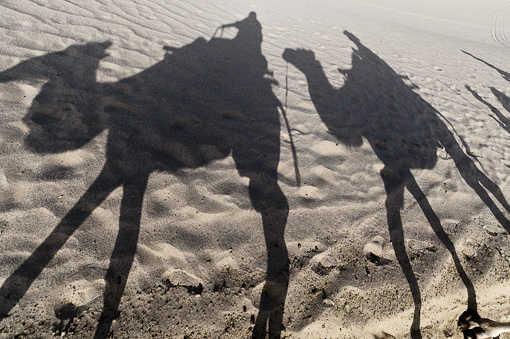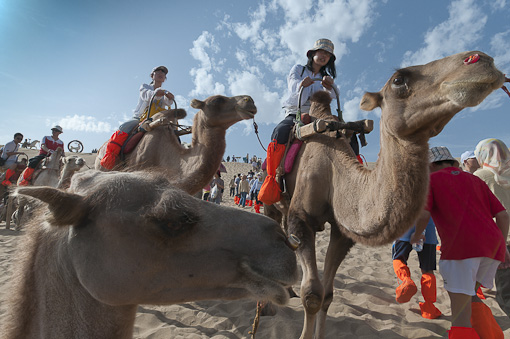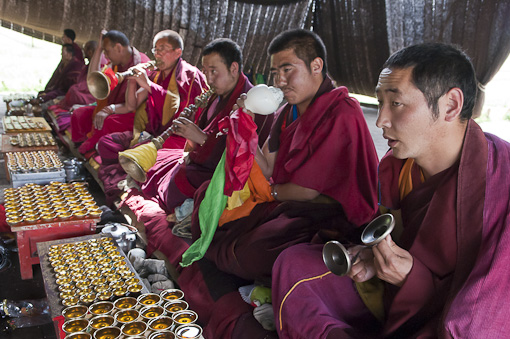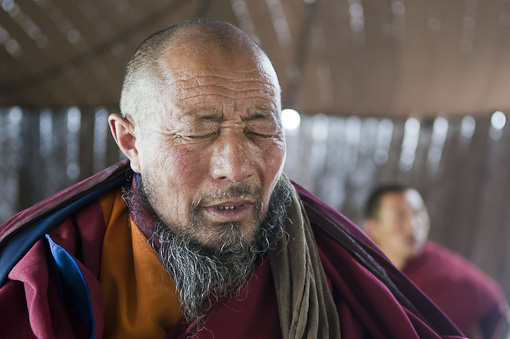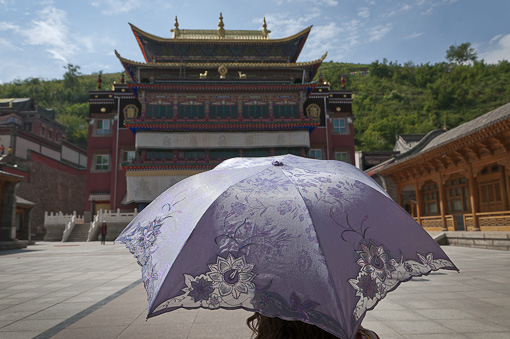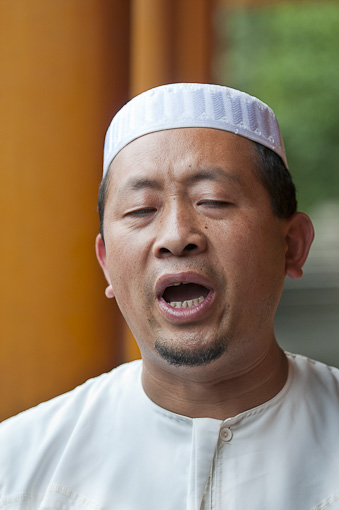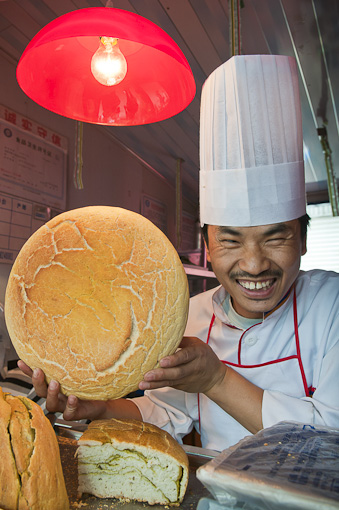Yesterday evening I was exploring this sprawling Tibetan Buddhist monastery and came upon 250 yellow hat sect monks chanting in the fading summer light and seated in a beautiful outdoor courtyard. After about 45 minutes, the orderly formation broke up into a wild scene of shouting and hand clapping as pairs of monks practiced their traditional form of debate.
Listen to hundreds of monks debate in this 40 second sound clip, then fade into deep throated leader and group chanting.
Debate is an important part of a Tibetan monk's training, and is said to help expand the mind, increase mental sharpness, develop analytical skills and help gain mental clarity.
The debates follow a strict form, with the standing questioner challenging the thesis of the humbly sitting defender. As the questioner raises doubts, the exchange becomes increasingly animated, with exaggerated body language, lunging, hand slapping and loud shouting. The defender mostly sits quietly and looks away, occasionally making a counter point by waving his arm.
This is probably my last post from this province in China's north west. With just 6.5 million of the country's 1.3 billion, it's strong ethnic Tibetan and Muslim ethnic minority population, has given me some amazing photographs and sounds.
I also enjoyed making new Chinese photographer friends at the Qinghai Three Rivers Photography Festival, and along with colleague Nancy Brown of our South Florida chapter of the American Society of Media Photographers, had a blast helping to judge the 6,000 entries.
